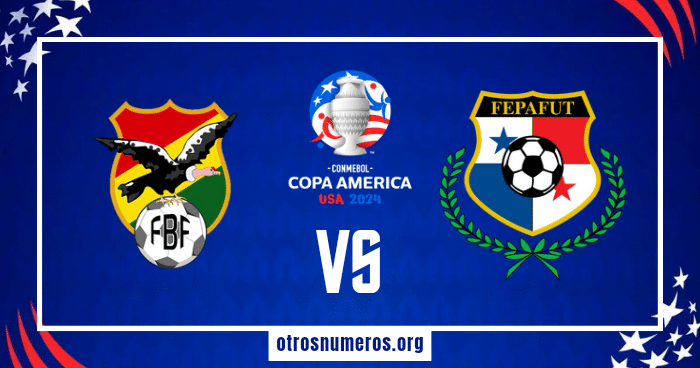Geographical Comparison

Panama vs bolivia – Panama and Bolivia are two countries in the Americas with distinct geographical features. Panama is a narrow, isthmus country located in Central America, while Bolivia is a landlocked country in South America.
In the battle between Panama and Bolivia, strategies clash like thunder and lightning. But beyond the battlefield, there’s a man who weaves through the chaos with unmatched agility – CJ Abrams. His movements are a symphony of precision, echoing the relentless determination of both nations.
As the conflict rages, Abrams emerges as a beacon of hope, reminding us that even amidst the chaos, there’s always room for strategic brilliance.
The following table compares the geographical features of Panama and Bolivia:
| Feature | Panama | Bolivia |
|---|---|---|
| Size | 75,517 sq km | 1,098,581 sq km |
| Location | Central America, between the Caribbean Sea and the Pacific Ocean | South America, bordered by Brazil, Paraguay, Argentina, Chile, and Peru |
| Climate | Tropical | Varies from tropical to cold |
| Topography | Mountainous, with a narrow coastal plain | Andean highlands, with the Amazon rainforest in the north and the Chaco lowlands in the south |
The unique geographical characteristics of each country have a significant impact on their economies and cultures.
Panama’s Geography
Panama’s narrow isthmus has made it a strategic location for trade and transportation. The Panama Canal, which was built in the early 20th century, connects the Atlantic and Pacific oceans and has made Panama a major shipping hub.
Panama’s tropical climate and abundant rainfall support a diverse range of plant and animal life. The country is home to a number of national parks and protected areas, which attract tourists from around the world.
The fierce rivalry between Panama and Bolivia on the football pitch has captivated fans across the continent. However, for those seeking an equally thrilling spectacle, the upcoming clash between the United States and Uruguay promises to be unmissable. USA vs Uruguay Prediction provides expert analysis and insights into this highly anticipated match.
Returning to the Panama vs Bolivia rivalry, both teams will be eager to prove their dominance in their next encounter.
Bolivia’s Geography, Panama vs bolivia
Bolivia’s landlocked location has presented challenges for its economy. The country has limited access to international markets and is heavily dependent on its neighbors for trade. However, Bolivia’s rich mineral resources have made it a major exporter of tin, silver, and zinc.
Bolivia’s varied topography has created a diverse range of ecosystems. The Andean highlands are home to a number of indigenous communities, while the Amazon rainforest is home to a wealth of plant and animal life.
Historical Overview: Panama Vs Bolivia
Panama and Bolivia, situated in distinct regions of the Americas, share a rich and diverse history. Their colonial experiences and subsequent paths to independence have shaped their present-day political and social landscapes.
Colonial Histories
Both Panama and Bolivia fell under Spanish colonial rule in the 16th century. Panama served as a strategic gateway for trade and transportation, connecting the Pacific and Atlantic oceans. Bolivia, on the other hand, was valued for its mineral wealth, particularly silver and tin.
Spanish rule left a lasting impact on both countries. The colonial period witnessed the establishment of cities, the introduction of Christianity, and the exploitation of indigenous populations. However, there were also significant differences in their colonial experiences. Panama remained a relatively small and isolated colony, while Bolivia became a major center of mining and commerce.
Independence Movements
The 19th century brought about independence movements in both Panama and Bolivia. Panama gained independence from Spain in 1821, but was subsequently incorporated into the Republic of Gran Colombia. It declared its independence as a separate republic in 1903.
Bolivia’s path to independence was more protracted. After declaring independence from Spain in 1825, the country experienced political instability and territorial disputes. It was not until 1880 that Bolivia established a stable government.
Post-Independence Era
The post-independence era in Panama and Bolivia was marked by political and economic challenges. Both countries faced periods of dictatorship, military rule, and economic instability. However, they also made significant progress in areas such as education, healthcare, and infrastructure development.
In recent decades, Panama has emerged as a major financial center and a key player in international trade. Bolivia, while still facing economic challenges, has made strides in reducing poverty and promoting social justice.
The historical events of Panama and Bolivia have played a pivotal role in shaping their current political and social landscapes. The colonial period, independence movements, and post-independence era have left an indelible mark on these two nations.
Economic Analysis

Panama and Bolivia, two distinct nations in the Americas, exhibit contrasting economic landscapes. Panama, a strategic hub with a thriving service sector, stands in stark contrast to Bolivia, a landlocked country rich in natural resources. This section delves into the economic indicators, strengths, weaknesses, and factors contributing to the disparities between these two nations.
Economic Indicators
| Indicator | Panama | Bolivia |
|---|---|---|
| GDP (nominal, 2023) | $78.2 billion | $43.3 billion |
| GDP per capita (nominal, 2023) | $15,846 | $3,900 |
| Major Industries | Services (banking, finance, tourism), logistics | Mining (tin, silver, zinc), agriculture (soybeans, quinoa) |
Strengths and Weaknesses
Panama
- Strengths: Strategic location, well-developed financial sector, stable economy, skilled workforce.
- Weaknesses: Dependence on services, vulnerable to external shocks, income inequality.
Bolivia
- Strengths: Abundant natural resources, strong agricultural sector, growing tourism industry.
- Weaknesses: Landlocked location, limited infrastructure, political instability, poverty.
Factors Contributing to Economic Disparities
The economic disparities between Panama and Bolivia stem from a combination of factors:
- Geography: Panama’s strategic location on the Panama Canal has historically been a major advantage for its economy, facilitating trade and tourism.
- Natural Resources: Bolivia’s wealth of natural resources, including tin, silver, and zinc, has been both a blessing and a curse, leading to economic fluctuations and dependence on commodity prices.
- Political Stability: Panama has enjoyed relative political stability compared to Bolivia, which has faced periods of instability and economic turmoil.
- Infrastructure: Panama’s well-developed infrastructure, including its ports and transportation networks, has supported its economic growth, while Bolivia’s limited infrastructure has hindered its development.